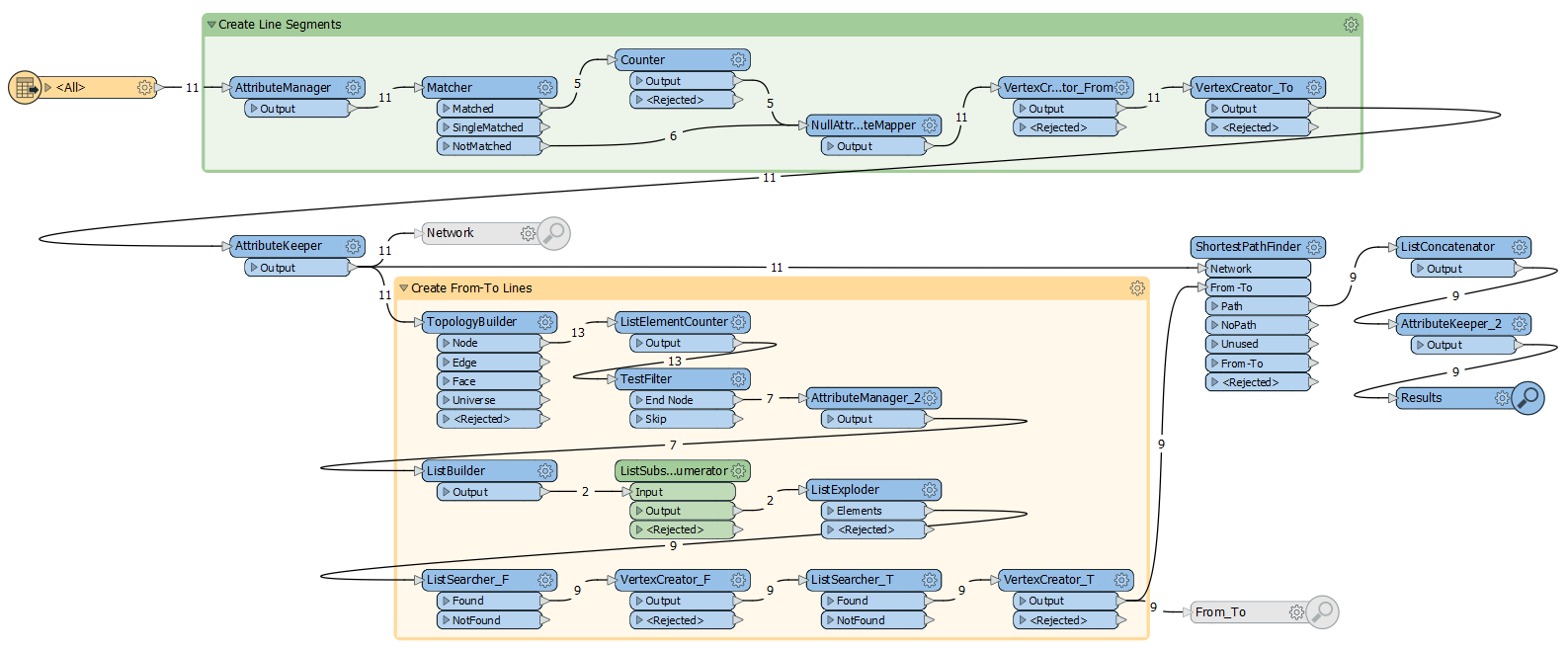I have a question.
I have the network below, but I only have the data.
i want to know which section to go through to go from endpoint to endpoint.
in this example I want to get 3 answers.
which sections to go through to get from:
1) from 1 to 5
2) from 1 to 8
3) from 5 to 8
how can i solve this? the solution should be:
the solution should be:
1) sections 21,22,25,27
2) sections 21,22,25,26,23,24
3) sections 27,26,23,24









